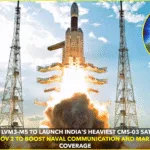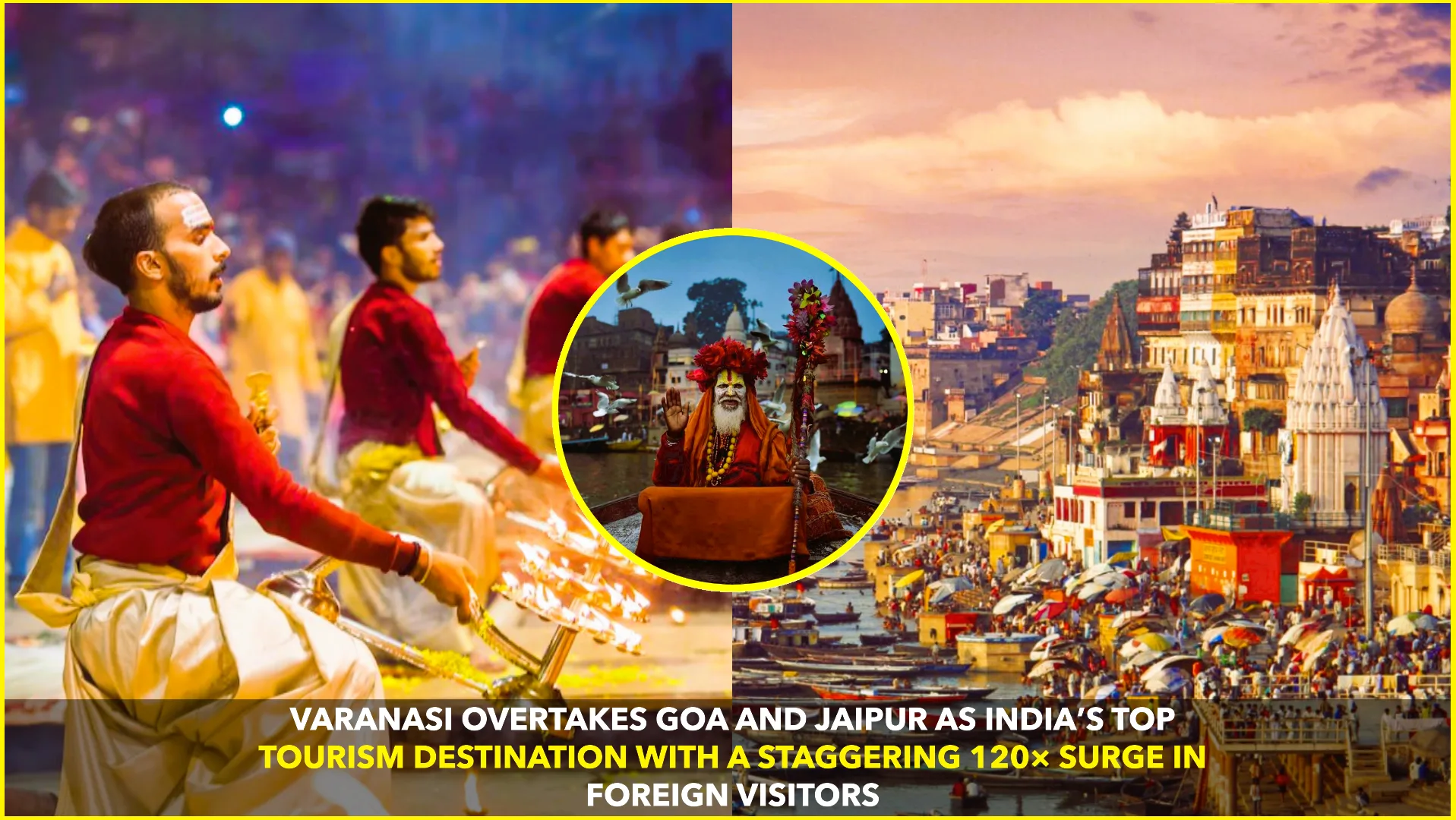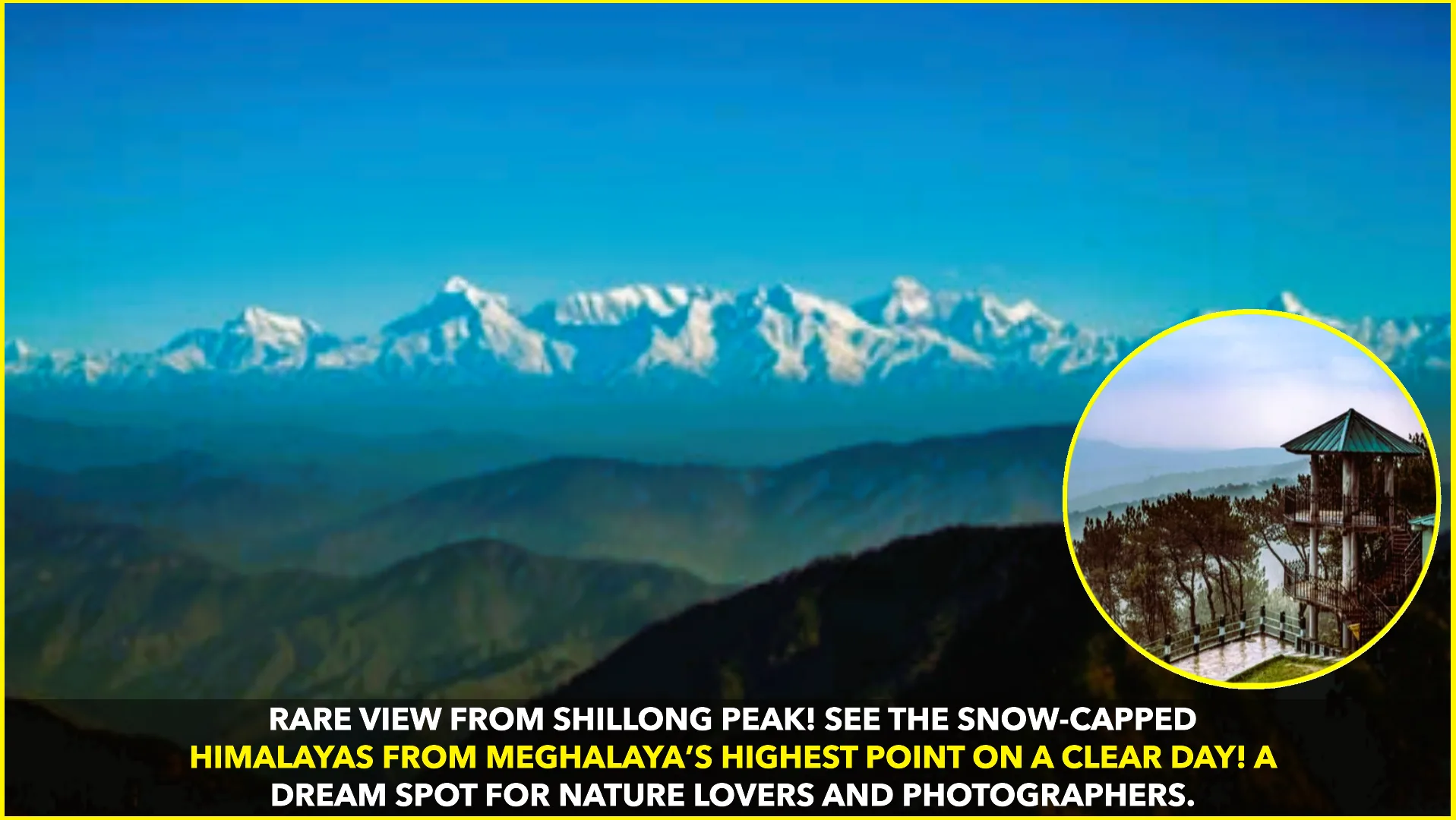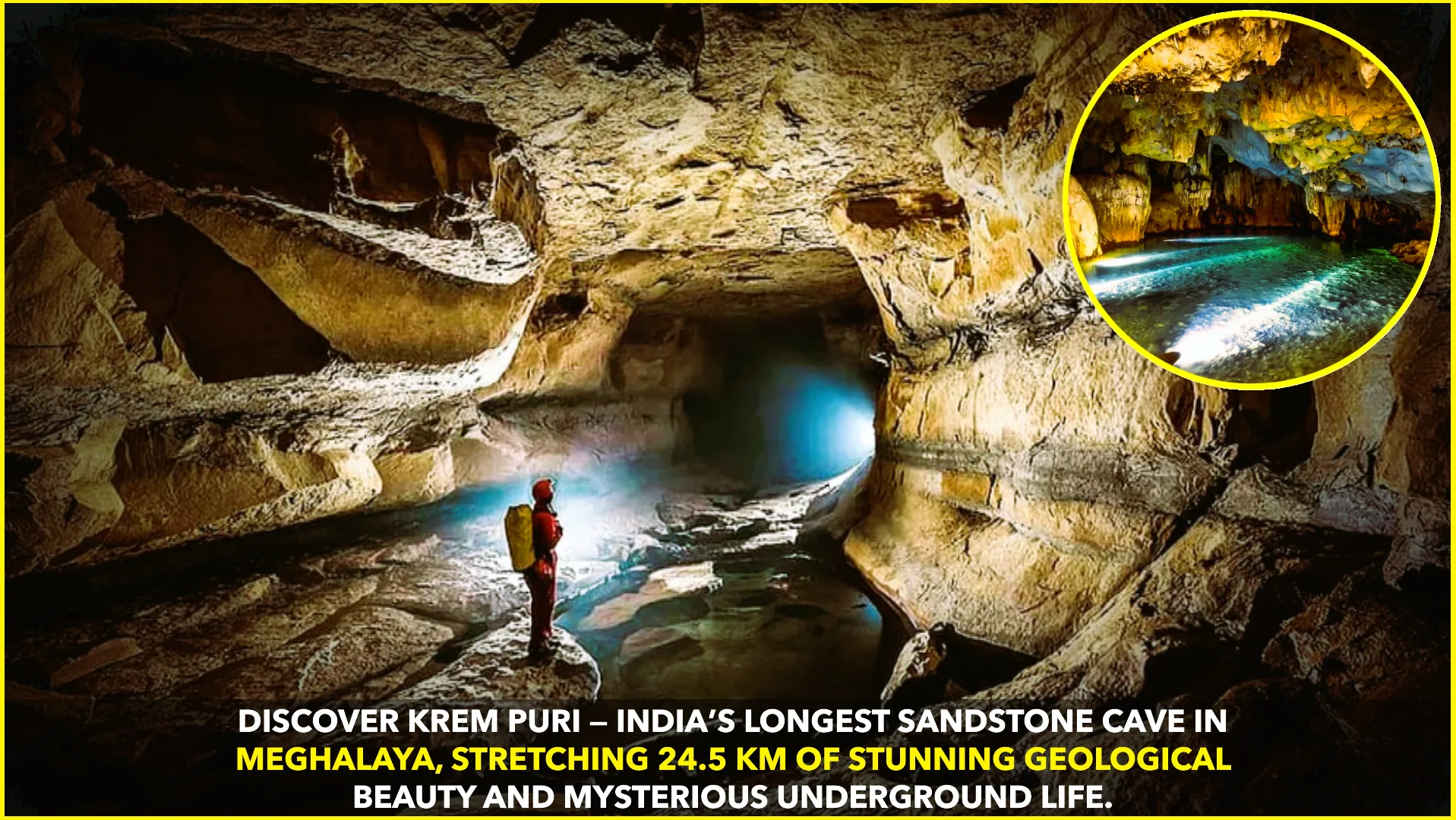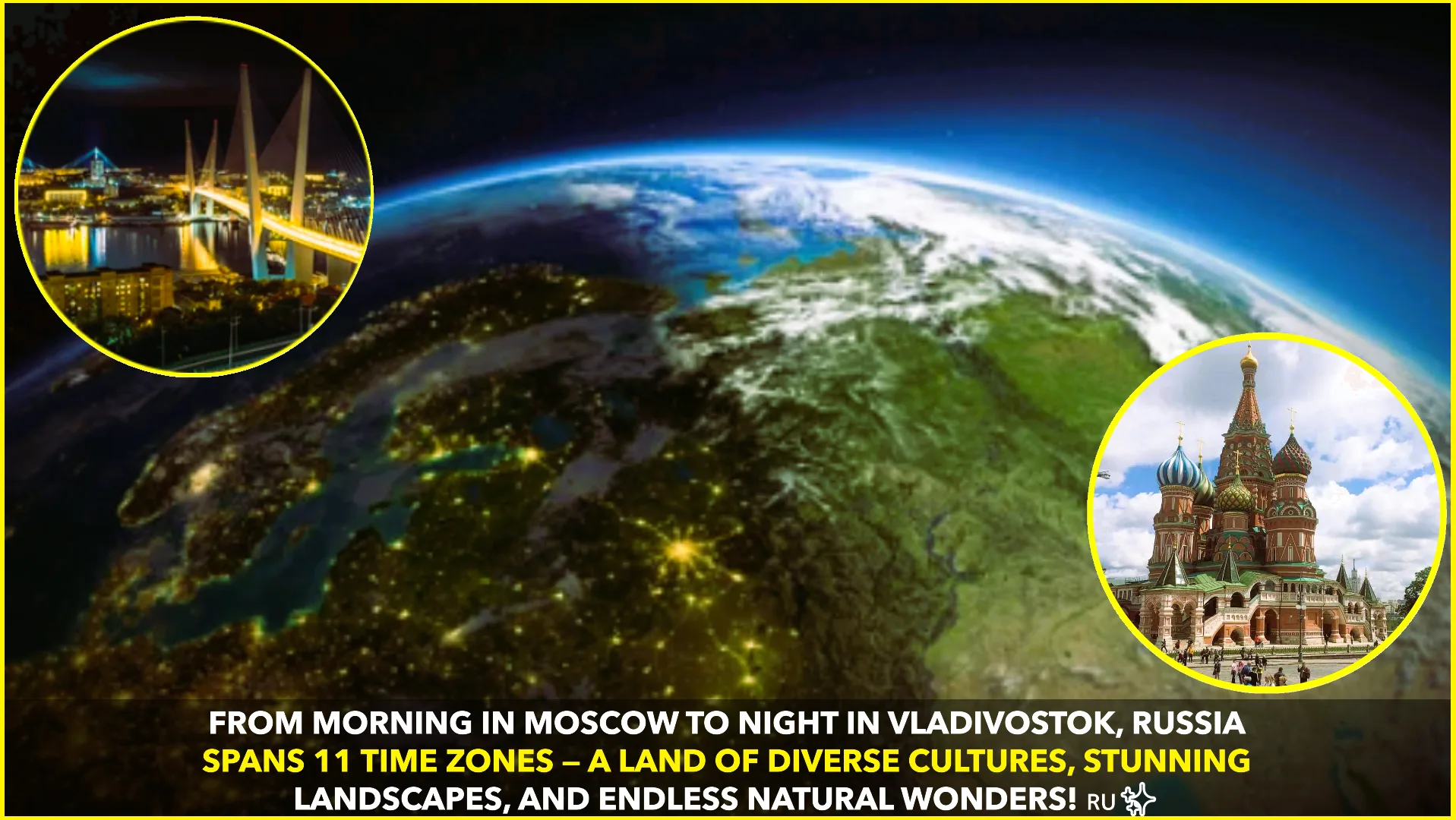Rajasthan, the “Land of Kings,” is a kaleidoscope of vibrant colors, rich history, and stunning landscapes. From the majestic Thar Desert to the shimmering lakes of Udaipur, Rajasthan offers something for everyone. Here are the top 10 must-visit places in Rajasthan, along with estimated budgets to help you plan your trip:
1. Jaipur: The Pink City’s
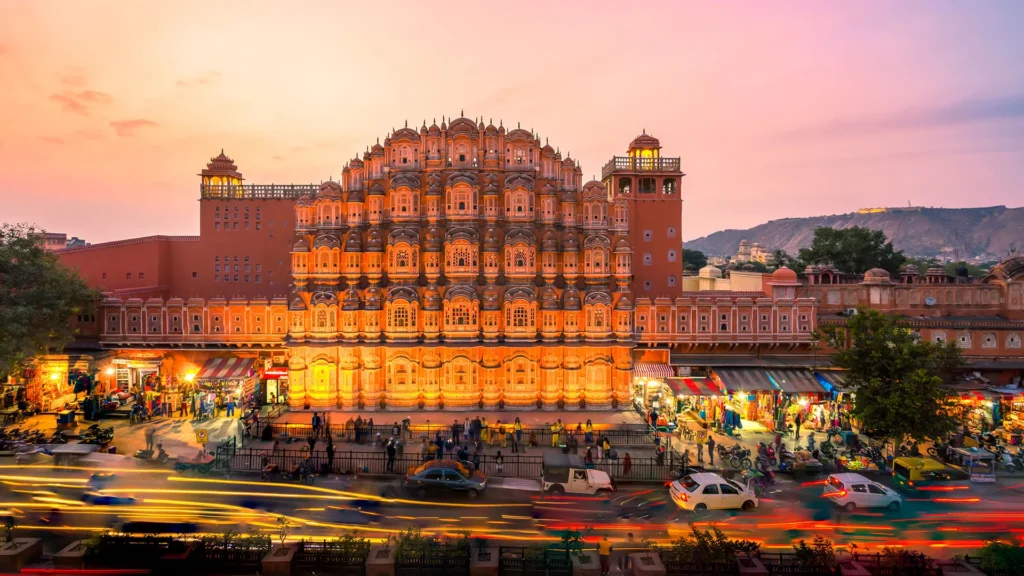
Jaipur, the vibrant capital of Rajasthan, beckons travelers with its kaleidoscope of colors, rich history, and captivating charm. From the majestic forts and opulent palaces to bustling bazaars and delectable cuisine, the “Pink City” offers a sensory feast for every budget. So, pack your bags, put on your rose-tinted glasses, and let’s explore Jaipur on an unforgettable adventure!
Budgeting Your Pink City Journey:
Accommodation:
- Luxury (₹5,000+ per night): Immerse yourself in royal grandeur at heritage hotels like Rambagh Palace or Taj Jai Mahal.
- Mid-range (₹1,500 – ₹5,000 per night): Comfortable stays with character abound in areas like C-Scheme and Bani Park.
- Budget (₹500 – ₹1,500 per night): Cozy guesthouses and homestays in the old city offer authentic experiences.
Food:
- Fine dining (₹1,000+ per meal): Savor Rajasthani delicacies at traditional restaurants like Niro’s or Spice Route.
- Mid-range (₹300 – ₹1,000 per meal): Explore lively street food stalls and rooftop cafes for flavorful curries, samosas, and chai.
- Budget (₹100 – ₹300 per meal): Indulge in delicious thalis and vegetarian fare at local dhabas.
Activities:
- Must-dos (₹500 – ₹1,000): Explore Amber Fort, Hawa Mahal, City Palace, Jantar Mantar, and Nahargarh Fort. Entry fees range from ₹50 to ₹300, and audio guides are available for additional cost.
- Off-the-beaten-path (₹100 – ₹500): Visit Galtaji Temple, explore Bapu Bazar for handicrafts, or experience street food at Johri Bazaar.
- Day trips (₹1,000 – ₹2,000): Embark on an elephant safari at Amber Fort, explore the ruins of Abhaneri stepwells, or visit Sanganer village for hand-block printing demonstrations.
Top Tips for Budget Travelers:
- Utilize public transportation – rickshaws are affordable and buses connect major attractions.
- Consider purchasing combo tickets for forts and palaces for discounted entry.
- Bargaining is expected at bazaars, but be respectful and fair.
- Pack for hot weather and comfortable footwear for exploring forts and bazaars.
Sample Budget for a 3-day trip:
- Accommodation (mid-range): ₹3,000 per night
- Food (mix of mid-range and budget): ₹1,000 per day
- Activities (including entry fees and transport): ₹1,500 per day
Total: ₹13,500 (approximately)
Remember, this is just a sample, and you can adjust it based on your priorities and spending style. The beauty of Jaipur lies in its unexpected corners and vibrant energy, waiting to be discovered even on a shoestring budget.
So, don your adventurous spirit, embrace the pink hues, and get ready to fall in love with Jaipur, the city that paints dreams in vibrant colors!
2. Udaipur: The City of Lakes
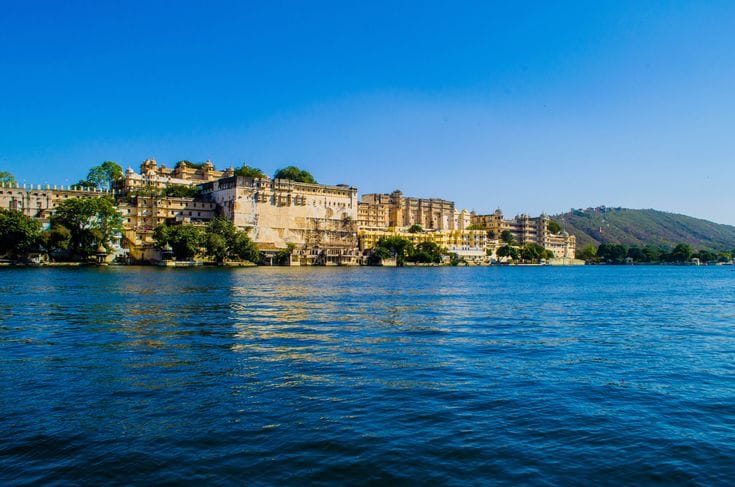
Udaipur, nestled amidst shimmering lakes and verdant hills in Rajasthan, is a city straight out of a fairytale. Often dubbed the “Venice of the East,” it’s a captivating blend of Rajput grandeur, serene beauty, and vibrant culture. Whether you’re a history buff, a romance seeker, or an adventure enthusiast, Udaipur has something for everyone.
Let’s dive into the top must-visit places in Udaipur, along with estimated budgets, to help you plan your dream trip:
1. Lake Pichola and the Lake Palace:
The crown jewel of Udaipur, Lake Pichola, is a mesmerizing expanse of turquoise waters, reflecting the majestic Aravalli Hills. Take a boat ride and admire the iconic Lake Palace, a white marble dream floating on the lake’s surface. You can even splurge on a luxurious stay at this former royal residence!
Budget: Boat ride – ₹200-500 per person, Lake Palace stay – ₹25,000+ per night.
2. City Palace:
A grand testament to Rajput architecture, the City Palace sprawls along the eastern shore of Lake Pichola. Explore its intricate courtyards, marvel at the Hall of Mirrors adorned with thousands of glass pieces, and discover breathtaking views from the rooftop. Don’t miss the mesmerizing light and sound show in the evenings!
Budget: Entry fee – ₹50-300 per person, Light and Sound Show – ₹150 per person.
3. Jagdish Temple:
Dedicated to Lord Vishnu, the Jagdish Temple is a vibrant landmark in Udaipur’s old city. Its towering facade, intricately carved with Hindu deities, is a sight to behold. Step inside and soak in the peaceful atmosphere amidst chanting devotees.
Budget: Free entry.
4. Saheliyon-ki-Bari (Garden of the Maidens):
This enchanting garden was created by Maharana Sangram Singh for his ladies to relax and socialize. Lush green lawns, lotus ponds, fountains, and intricate pavilions make it a photographer’s paradise. Take a leisurely stroll and soak in the tranquility.
Budget: Entry fee – ₹50 per person.
5. Jag Mandir:
Located on an island in Lake Pichola, Jag Mandir is another architectural marvel. Once a royal pleasure palace, it’s now a luxurious hotel offering mesmerizing lake views and a glimpse into royal life. Enjoy a meal at the lakeside restaurant for a truly unforgettable experience.
Budget: Entry fee – ₹250 per person, Restaurant prices vary.
Estimated Budget for a Day in Udaipur:
- Food: ₹500-1000 per person
- Accommodation: Budget stays – ₹1000-2000 per night, Mid-range hotels – ₹3000-5000 per night, Luxury hotels – ₹10,000+ per night
- Transport: Auto rickshaws – ₹50-100 per ride, Local buses – ₹10-20 per ride
- Entry fees: ₹200-500 per person (depending on attractions)
Additional Tips:
- The best time to visit Udaipur is between October and March, when the weather is pleasant.
- Bargaining is expected in local markets, especially for souvenirs.
- Hire a local guide for deeper insights into the city’s history and culture.
- Don’t miss the vibrant Rajasthani folk performances and puppet shows.
Udaipur is a city that will leave you spellbound with its beauty, charm, and rich heritage. So pack your bags, book your tickets, and get ready to fall in love with the “City of Lakes”!
3. Jodhpur: The Blue City
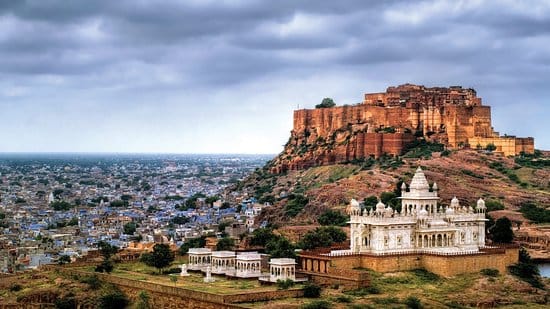
Jodhpur, the “Blue City,” shimmers beneath the desert sun like a mirage come to life. Nestled amidst the rugged Thar, this majestic city beckons travelers with its azure-washed houses, towering forts, and a kaleidoscope of vibrant experiences. Whether you’re a history buff, an art enthusiast, or simply an adventurer seeking a taste of the extraordinary, Jodhpur promises an unforgettable sojourn.
Delving into History’s Embrace:
Jodhpur’s rich past unfolds like an epic saga. Founded in 1459 by Rao Jodha, the city flourished as the capital of the Marwar kingdom. The impregnable Mehrangarh Fort, perched atop a rocky hill, stands as a testament to Jodhpur’s martial prowess. Within its ramparts lie museums showcasing royal artifacts, intricate courtyards, and the iconic Chamunda Mataji temple, adorned with 108 heads of slain enemies.
Budget: Your Mehrangarh exploration can be comfortably covered within ₹200-300.
Beyond the Fortified Walls:
Step outside the fort and lose yourself in the labyrinthine lanes of the old city. Every corner explodes with a riot of color – houses painted in myriad shades of indigo, sapphire, and cerulean, their doors and windows embellished with intricate carvings. Shop for leheriya textiles, silver jewelry, and lacquerware at bustling bazaars like Sardar Market and Tripolia Bazaar. Don’t miss the iconic Ghanta Ghar, the city’s clock tower, rising like a sentinel amidst the vibrant chaos.
Budget: Explore the bazaars and grab some souvenirs for under ₹1,000.
A Royal Interlude:
Experience Jodhpur’s regal past at Umaid Bhawan Palace, a architectural marvel blending Art Deco with Rajput influences. Now a grand hotel, the palace offers museum tours, afternoon tea on the terrace overlooking the Mehrangarh Fort, and even heritage walks.
Budget: Umaid Bhawan Palace tours range from ₹300-1000, while a cup of tea at the terrace can cost around ₹500.
Desert Enchantment:
Venture beyond the city walls and delve into the vast Thar Desert. Embark on a camel safari, feeling the warm sand beneath your feet as the sun dips below the horizon, painting the sky in fiery hues. Spend the night under a blanket of stars, listening to tales spun by local guides around crackling campfires.
Budget: Camel safaris can range from ₹1,500 to ₹5,000 depending on the duration and inclusions.
Jodhpur’s Culinary Delights:
No Jodhpur experience is complete without savoring its delectable cuisine. From the fiery Marwari curries like Laal Maas and Gatta Curry to the melt-in-your-mouth Dal Bati Churma, Jodhpuri food tantalizes your taste buds with its bold flavors and aromatic spices. Wash it down with a refreshing glass of buttermilk or the local favorite, Jal Jeera.
Budget: A typical Jodhpuri meal can cost anywhere from ₹200 to ₹500 at local restaurants.
Jodhpur: Where Budget Meets Majesty
Jodhpur offers a delightful blend of history, culture, and natural beauty, all at an affordable price. With experiences ranging from exploring majestic forts to camel safaris under starry skies, Jodhpur caters to every budget and wanderlust. So, pack your bags, embrace the azure hues, and get ready to be swept away by the magic of the Blue City!
Estimated Budget for a 2-day Jodhpur Trip:
- Accommodation: ₹1,000-₹2,000 per night
- Food: ₹500-₹1,000 per day
- Activities: ₹500-₹1,500 per day
- Transport: ₹300-₹500 per day
Total: ₹3,300-₹6,500 (approximately)
Remember, these are just estimates, and your actual expenses may vary depending on your preferences and travel style. But one thing’s for sure: Jodhpur will leave you mesmerized, enriching your soul with its vibrant tapestry of experiences, all without breaking the bank.
So, what are you waiting for? Start planning your Jodhpur adventure today!
4. Pushkar – The Holy City
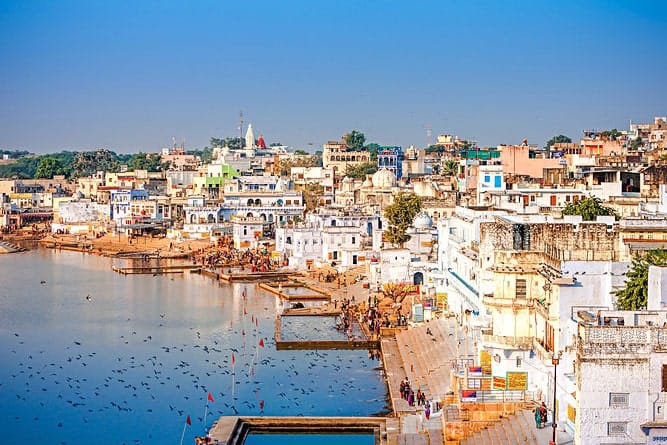
Nestled amidst the Aravalli Hills, lies Pushkar, a sacred city in Rajasthan, India. Revered as one of the oldest pilgrimage sites in the country, Pushkar exudes an ethereal charm that transcends religion and draws travelers from all corners of the globe.
A Dip in Divinity: The Holy Lake
The city’s heart is the Pushkar Lake, believed to have sprung from the petals of a lotus flower dropped by Lord Brahma. A dip in its sacred waters is said to cleanse sins and grant wishes. Witnessing the pre-dawn rituals, with pilgrims chanting hymns and offering prayers to the rising sun, is a truly mesmerizing experience.
Temples and Tales: A Spiritual Tapestry
Pushkar boasts over 400 temples, each with its own story to tell. The most prominent among them is the only Brahma Temple in the world, adorned with intricate carvings and mythical tales. Other notable temples include the Savitri Temple, dedicated to Lord Brahma’s wife, and the Varaha Temple, housing a boar incarnation of Lord Vishnu.
Beyond the Sacred: Unveiling Pushkar’s Soul
Pushkar is not just about temples and rituals. The vibrant bazaars brim with colorful textiles, trinkets, and handmade souvenirs. Take a camel ride through the sand dunes or explore the serene ghats lining the lake. Don’t miss the Pushkar Camel Fair, a vibrant spectacle of camel races, folk music, and cultural extravaganza held annually in November.
Budgeting your Bliss: A Pushkar Pilgrimage
Pushkar caters to travelers of all budgets. Budget-friendly accommodation options like dharamshalas and guesthouses are readily available. For a more luxurious experience, heritage havelis and boutique hotels offer comfortable stays. Expect to spend between ₹1,500 to ₹4,000 per day on accommodation and meals.
Planning your Pushkar Pilgrimage:
- The best time to visit Pushkar is during the cooler months, from October to March.
- Avoid monsoon season (July-September) when the city experiences heavy rainfall.
- Pack comfortable clothes and shoes for exploring the temples and bazaars.
- Be respectful of local customs and traditions.
**Pushkar beckons you on a journey of self-discovery, where spirituality blends seamlessly with vibrant culture. So, pack your bags, embrace the serenity, and lose yourself in the magic of this holy city.
Here’s a suggested itinerary for a 2-day trip to Pushkar:
- Day 1: Morning – Witness the sunrise rituals at the lake, visit the Brahma Temple and other prominent temples. Afternoon – Explore the bazaars, take a camel ride, and enjoy a sunset boat ride on the lake.
- Day 2: Morning – Visit the Savitri Temple and other ghats. Afternoon – Attend aarti at a temple, indulge in some souvenir shopping, and enjoy a farewell dinner at a rooftop restaurant overlooking the lake.
Remember, Pushkar is more than just a destination; it’s an experience that will stay with you long after you leave. So, come, soak in the holy vibes, and discover the magic of this soul-stirring city.
I hope this blog has inspired you to embark on your own Pushkar pilgrimage. If you have any questions or need further recommendations, feel free to leave a comment below.
Travel safe and happy!
5. Jaisalmer: The Golden City
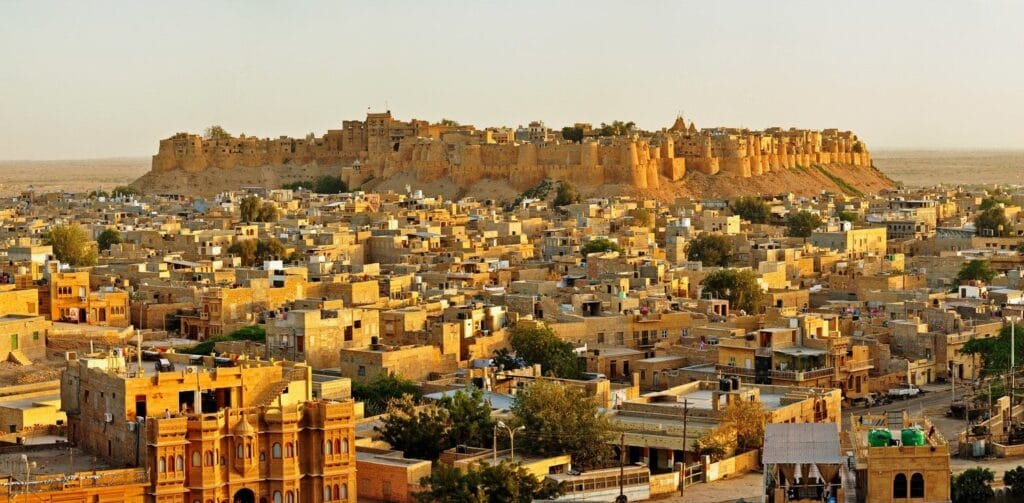
Jaisalmer, the “Golden City,” shimmers like a mirage rising from the golden sands of the Thar Desert. This enchanting city in Rajasthan beckons travelers with its majestic forts, vibrant culture, and endless desert adventures. Whether you’re a history buff, a thrill-seeker, or simply a romantic soul, Jaisalmer has something to offer everyone.
Unveiling the Golden City’s Treasures:
- Jaisalmer Fort: This UNESCO World Heritage Site, perched atop a hill, is a masterpiece of Rajput military architecture. Explore its labyrinthine lanes, majestic palaces, and breathtaking views of the Thar Desert. (Budget: ₹50 entry fee)
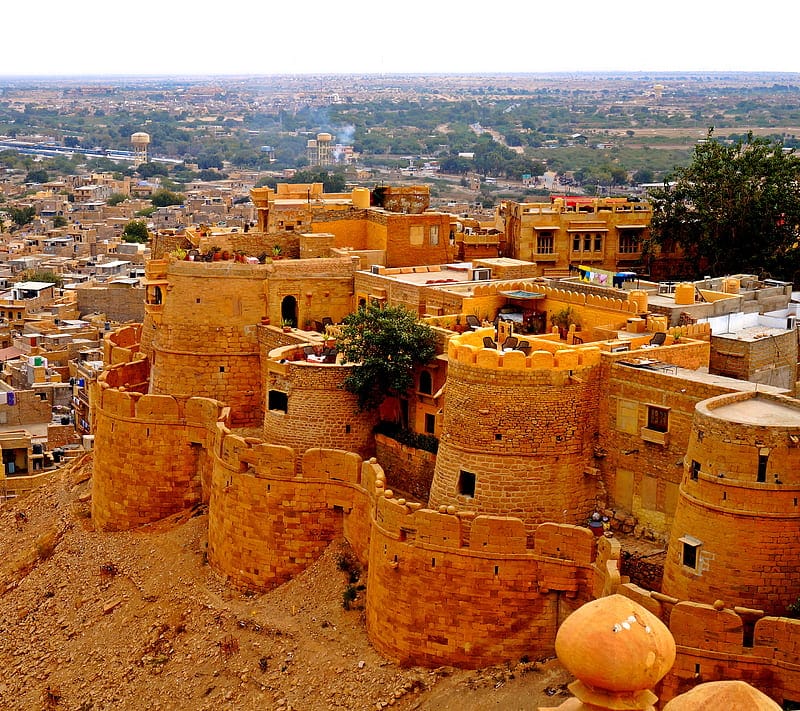
- Golden Thar Desert: Embark on a camel safari, the quintessential Jaisalmer experience. As the sun dips below the horizon, painting the dunes in a golden glow, feel the magic of the desert under a star-studded sky. (Budget: ₹300-600 for camel safari)
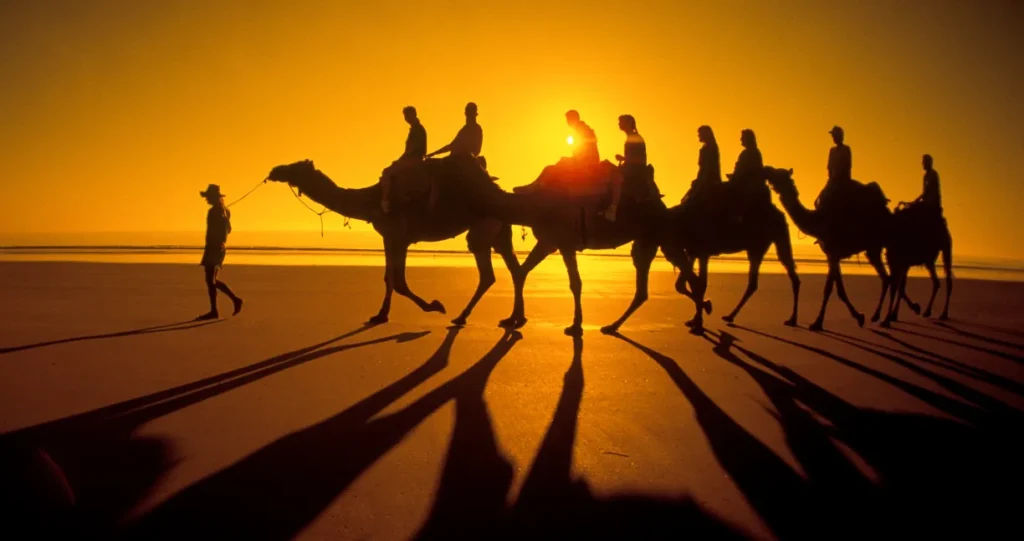
- Patwon-ki-Haveli: Step back in time with these intricately carved havelis, showcasing the wealth and artistry of Jaisalmer’s wealthy merchants. (Budget: ₹50 entry fee)
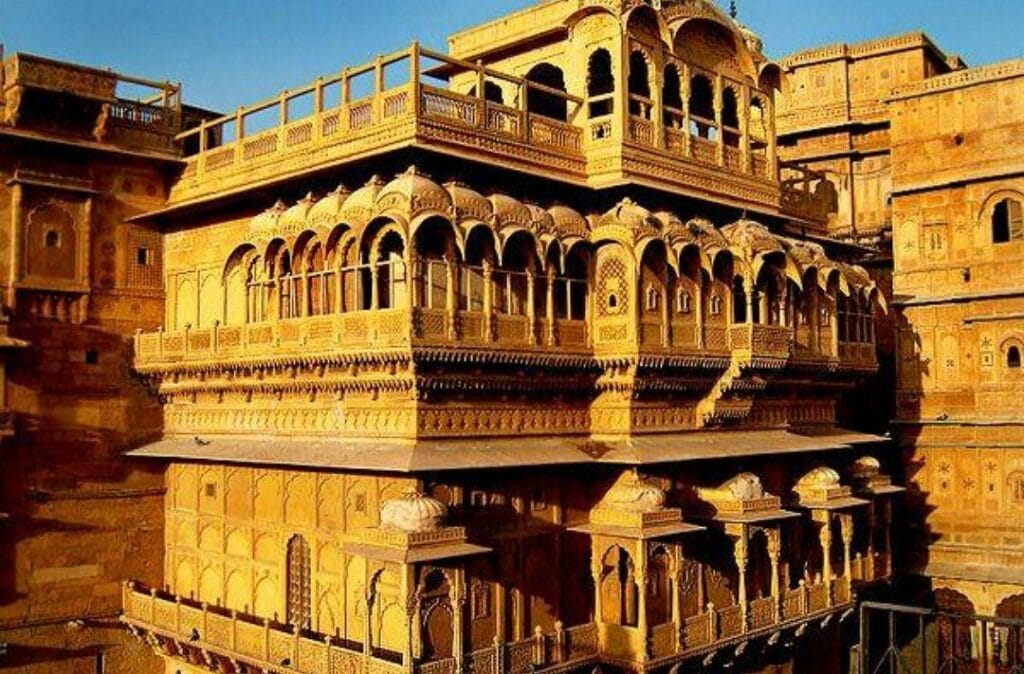
- Gadisar Lake: Take a break from the desert heat at this serene lake, a haven for migratory birds and a popular picnic spot. Enjoy camel rides, boating, or simply soak in the peaceful atmosphere. (Budget: Free)

- Desert Culture & Cuisine: Immerse yourself in the vibrant Rajasthani culture with folk music and dance performances. Savor the local delicacies like Laal Maas (spicy mutton curry) and Dal Bati Churma (lentil curry with roasted bread). (Budget: ₹200-500 per meal)
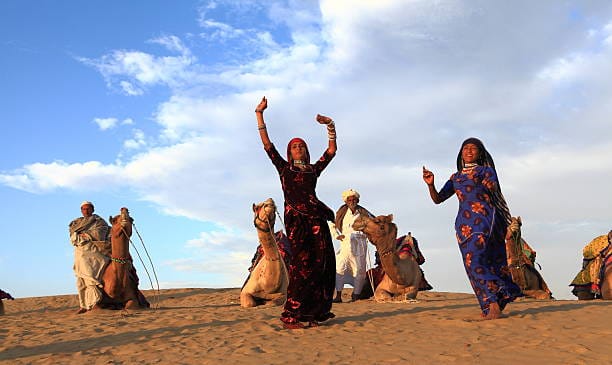
Planning Your Golden Escape:
- Budget: A trip to Jaisalmer can be tailored to various budgets. Budget travelers can find affordable accommodation and activities, while luxury options are also available. Expect to spend between ₹2,000-₹5,000 per day on accommodation, meals, and activities.
- Getting There: Jaisalmer has an airport with connections to major cities in India. You can also reach Jaisalmer by train or bus from Jodhpur or Jaipur.
- Best Time to Visit: The best time to visit Jaisalmer is during the winter months (October-March) when the weather is pleasant. However, if you’re looking for a truly unique experience, consider visiting during the Desert Festival (January-February) for vibrant celebrations and camel races.
Beyond the Golden Gates:
While Jaisalmer itself is a treasure trove, venture beyond the city walls for further adventures:
- Sam Sand Dunes: Experience the vastness of the Thar Desert with overnight camping under the stars at the Sam Sand Dunes. (Budget: ₹300-500 for camping)
- Akal Wood Fossil Park: Walk amidst petrified trees millions of years old, a testament to the ancient history of the desert. (Budget: ₹50 entry fee)
- Bada Bagh: Discover the cenotaphs of Jaisalmer’s royal families, each intricately carved and offering panoramic views of the city. (Budget: Free)
Jaisalmer is more than just a desert city; it’s a tapestry of history, culture, and adventure. So, pack your bags, let the golden hues guide you, and lose yourself in the magic of the “Golden City.”
Remember, this is just a starting point. Feel free to personalize your Jaisalmer itinerary based on your interests and budget. And above all, embrace the magic of the Thar Desert and let Jaisalmer leave you with golden memories that last a lifetime!
6. Ranthambore National Park
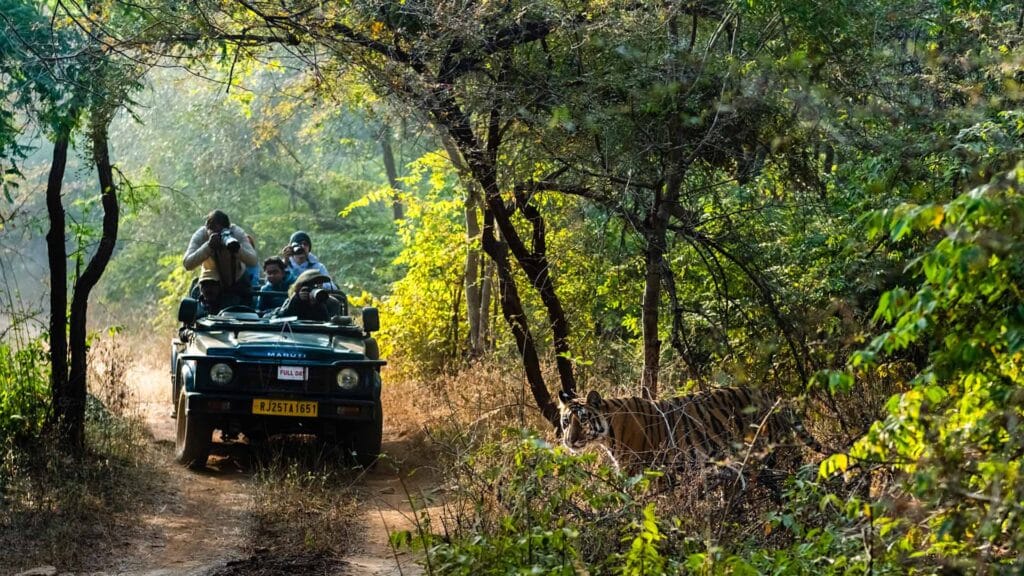
Imagine this: the thrill of spotting a majestic tiger as it emerges from the emerald embrace of the forest, the air thick with the chirping of exotic birds and the trumpeting of wild elephants. This is the magic of Ranthambore National Park, a crown jewel of Rajasthan, where nature unfolds in all its raw and captivating glory.
Nestled in the Aravalli Hills, Ranthambore is more than just a wildlife sanctuary; it’s a tapestry woven with history, adventure, and breathtaking landscapes. Once the private hunting ground of Maharajas, it’s now a thriving tiger reserve, boasting one of the highest densities of Bengal tigers in India. But the park’s magic extends beyond its striped royalty. Leopards slink through the shadows, sloth bears lumber through the undergrowth, and deer graze in sun-dappled clearings. Birdwatchers rejoice at the cacophony of over 300 species, from vibrant peacocks to majestic eagles soaring on thermals.
Planning Your Ranthambore Adventure:
Seasons:
- Oct-Mar: Peak season, pleasant weather, best chance for tiger sightings, higher costs and crowds.
- Apr-Jun: Hot and humid, fewer crowds, tigers become more active due to the heat.
- Jul-Sep: Monsoon season, park closed due to rains.
Budget:
- Accommodation: Budget guesthouses start at ₹1,500 per night, while luxury resorts can cost upwards of ₹20,000.
- Safaris: Jeep safaris are the main attraction, costing around ₹4,000-6,000 per person for a shared canter ride. Canter rides are cheaper at ₹2,000 per person.
- Other Activities: Boat safaris on Lake Chandrabhan, nature walks, and cultural trips to nearby villages are additional expenses.
Things to Do:
- Jeep Safaris: Embark on thrilling tiger-tracking adventures in specially designed jeeps.
- Boat Safaris: Glide across the serene Lake Chandrabhan, spotting crocodiles, birds, and maybe even a tiger quenching its thirst.
- Ranthambore Fort: Explore the ruins of a 10th-century fort, offering panoramic views of the park.
- Village Visits: Immerse yourself in the local Rajasthani culture by visiting nearby villages.
- Wildlife Photography: Capture the raw beauty of the park’s flora and fauna.
Tips for a Memorable Trip:
- Book your safaris well in advance, especially during peak season.
- Wear comfortable clothes and shoes suitable for rough terrain.
- Carry binoculars and a camera with a good zoom lens for wildlife photography.
- Respect the wildlife and their habitat. Don’t litter or make loud noises.
- Be patient and keep your eyes peeled. Tiger sightings, while not guaranteed, are an unforgettable experience.
Beyond the Tigers:
While tigers are undoubtedly the stars of Ranthambore, the park’s beauty extends far beyond its apex predator. The diverse flora, from towering trees to vibrant wildflowers, creates a stunning canvas. Spotting a shy sambar deer hiding in the bushes, witnessing a family of langurs swinging through the trees, or hearing the haunting call of a chital deer at dusk are all experiences that add to the magic of Ranthambore.
A Call to the Wild:
Ranthambore National Park is not just a tourist destination; it’s a sanctuary for endangered species and a testament to the delicate balance of our ecosystem. Visiting Ranthambore is a chance to reconnect with nature, be humbled by its power, and appreciate the importance of conservation. So, pack your bags, lace up your hiking boots, and embark on an unforgettable adventure into the wild embrace of Ranthambore. The tigers await, and so does a lifetime of memories waiting to be made.
Remember: Responsible tourism is key. Choose eco-friendly accommodations, minimize your waste, and support local communities. Let’s leave nothing but footprints and take away only memories.
Ranthambore National Park beckons you. Will you answer the call?
7. Bikaner – The Camel Country
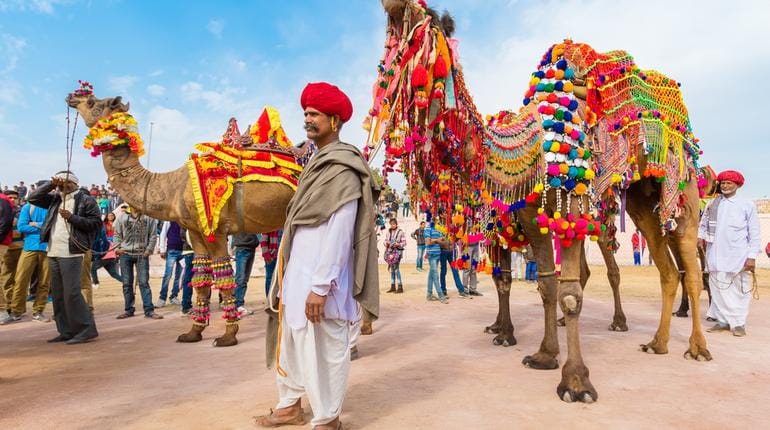
Beyond the shimmering palaces and bustling bazaars of Rajasthan lies a land etched in golden hues and camel footprints – Bikaner. This former princely state, nestled amidst the vast Thar Desert, beckons travelers with its unique blend of history, heritage, and adventure.
Get ready to swap bustling cityscapes for undulating sand dunes, opulent palaces for rustic charm, and the roar of traffic for the gentle clanging of camel bells. Bikaner promises an experience unlike any other, a journey into the heart of Rajasthan’s desert mystique.
Delving into Bikaner’s Rich Tapestry:
Founded in 1488 by Rao Bika, Bikaner’s rich tapestry is woven with tales of Rajput valor, merchant caravans, and the resilience of life in the desert. Every corner whispers stories of battles fought and won, camel trains crisscrossing the sands, and a culture imbued with the spirit of the Thar.
Exploring Architectural Marvels:
Bikaner’s architectural gems stand as testaments to its glorious past. The majestic Junagarh Fort, towering over the city, is a labyrinth of courtyards, temples, and chambers, each showcasing intricate Rajput craftsmanship. Within its walls lies the Lalgarh Palace, a vibrant blend of Mughal and Rajput architectural styles, adorned with colorful frescoes and delicate latticework.
Embracing the Desert’s Embrace:
No trip to Bikaner is complete without experiencing the magic of the Thar Desert. Glide across the undulating sand dunes on a camel safari, feeling the warm wind brush against your face and the endless sky stretching above. Witness the vibrant hues of sunrise and sunset paint the dunes in a mesmerizing spectacle, and let the silence of the desert wash over you, a balm for the soul.
Beyond the Sands:
Bikaner’s charm extends beyond the desert. Wander through the bustling lanes of the old city, marveling at the colorful bazaars overflowing with local handicrafts and spices. Seek blessings at the unique Karni Mata Temple, home to thousands of revered rats considered sacred. Immerse yourself in the vibrant colors and cultural nuances of Rajasthan’s Camel Country.
Budgeting for your Bikaner Adventure:
Bikaner caters to a variety of budgets, offering experiences for backpackers and luxury travelers alike. Here’s a rough estimate to help you plan:
- Accommodation: Budget guesthouses start at ₹500 per night, while mid-range hotels range from ₹1,500 to ₹3,000. Heritage havelis and luxury accommodations can cost upwards of ₹5,000 per night.
- Food: Local street food is incredibly affordable, with meals starting at ₹100. Mid-range restaurants cost around ₹300-500 per meal, while fine dining experiences can set you back ₹1,000 or more.
- Activities: Camel safaris range from ₹500 for a short ride to ₹3,000 for an overnight desert camp experience. Entrance fees for forts and palaces are typically around ₹100-200.
Unforgettable Experiences on a Budget:
Bikaner offers several ways to experience its magic without breaking the bank:
- Stay in a traditional haveli for a taste of local life.
- Explore the bustling old city bazaar on foot, bargaining for souvenirs.
- Visit the Karni Mata Temple and witness the unique rat temple tradition (free entry).
- Picnic in the lush oasis gardens near Junagarh Fort.
- Enjoy the vibrant Rajasthani sunset from atop the fort walls.
Bikaner beckons with its golden allure, promising an unforgettable journey into the heart of Rajasthan’s desert mystique. So, pack your bags, don your adventurous spirit, and get ready to experience the magic of the Camel Country. You won’t be disappointed!
Remember, this is just a starting point. Feel free to customize your Bikaner adventure to suit your interests and budget. Bon voyage!
8. Mount Abu: The Hill Station
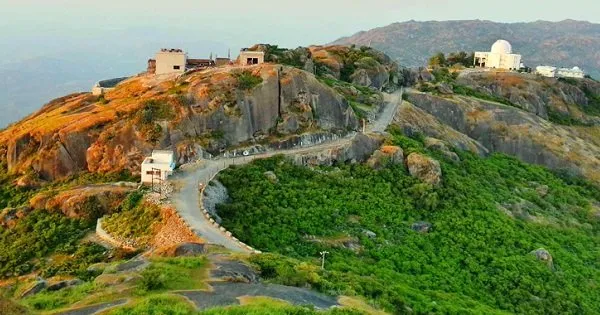
Imagine a verdant escape nestled amidst the rugged Aravalli hills, a cool reprieve from the fiery Rajasthan sun. This is Mount Abu, the only hill station in Rajasthan, beckoning travelers with its tranquil lakes, ancient temples, and breathtaking vistas.
Whether you’re seeking adventure, spiritual connection, or simply a break from the ordinary, Mount Abu has something for everyone. So, let’s pack our bags and embark on a journey to this enchanting hill station!
Unveiling the Charm of Mount Abu:
- Nakki Lake: The crown jewel of Mount Abu, Nakki Lake is a man-made wonder surrounded by lush greenery. Boat rides, horse rides, and leisurely strolls along the scenic pathway offer idyllic ways to soak in the beauty.
- Sunset Point: As the name suggests, this spot paints the sky in vibrant hues as the sun dips below the horizon. Witnessing this spectacle while sipping chai is an experience etched in memory.
- Guru Shikhar Peak: Trek to the highest point in Rajasthan for breathtaking panoramic views of the surrounding hills and valleys. The Jain temple at the summit adds a touch of serenity to the experience.
- Dilwara Temples: These intricately carved marble temples are masterpieces of Jain architecture. The Vimal Vasahi Jain Temple and Luna Vasahi Jain Temple are must-visits, adorned with delicate sculptures and exuding a sense of peace.
- Toad Rock: This naturally formed rock resembles a toad, offering a unique photo opportunity and a chance to unleash your inner explorer.
- Achalgadh Fort: Hike up to this ancient fort for a glimpse into Rajasthan’s rich history. Explore the temples within the fort complex and enjoy panoramic views of the surrounding landscape.
Budgeting for Your Mount Abu Adventure:
Mount Abu caters to various budgets, from budget-friendly guesthouses to luxurious resorts. Here’s a rough estimate for a 3-day trip:
- Accommodation: Budget guesthouses – ₹500-₹1000 per night, Mid-range hotels – ₹1500-₹3000 per night, Luxury resorts – ₹5000+ per night
- Food: Budget meals – ₹200-₹300 per day, Mid-range meals – ₹400-₹600 per day, Fine dining – ₹1000+ per day
- Activities: Boat rides – ₹100-₹200, Entry fees – ₹50-₹100, Trekking tours – ₹500-₹1000
Tips for a Hassle-Free Trip:
- The best time to visit Mount Abu is during the monsoon (July-September) or winter (November-February) when the weather is pleasant.
- Pack comfortable shoes for exploring the hills.
- Local buses and taxis are readily available for getting around.
- Bargaining is common in the markets, so don’t be afraid to negotiate!
- Respect the local culture and dress modestly while visiting temples.
Beyond the List:
Mount Abu offers something for everyone, whether you’re a nature lover, history buff, or simply seeking a break from the routine. So, pack your bags, embrace the cool mountain air, and discover the magic of Mount Abu!
Remember, this is just a starting point. With its abundance of hidden gems and charming streets, Mount Abu awaits your own unique adventure. So, go forth, explore, and fall in love with the serenity of this enchanting hill station!
9. Chittorgarh – The Fort City
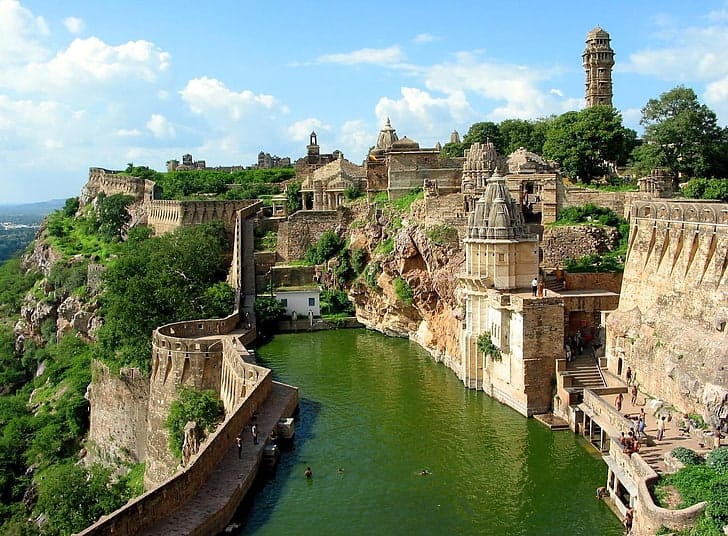
Towering majestically over the plains of Rajasthan, Chittorgarh is a city steeped in legend and valor. Renowned as the “Fort City,” its impregnable ramparts and captivating stories whisper tales of Rajput heroism and unwavering resilience. If you’re seeking a destination that blends rich history with breathtaking architecture, Chittorgarh should be at the top of your travel list.
A Legacy Etched in Stone
Chittorgarh’s fort, a UNESCO World Heritage Site, is the largest in India, sprawling over 700 hectares. Built by the Mauryans in the 3rd century BC, it has witnessed centuries of battles and sacrifices, bearing silent testimony to the rise and fall of empires.
- The Jauhar and Saka: Step back in time and hear the echoes of the Jauhar, a Rajput practice of self-immolation by women to protect their honor, and Saka, the ritual mass suicide by men, rather than face surrender. These acts of defiance stand as testaments to the Rajput spirit of courage and unwavering pride.
- Fateh Prakash Mahal: Ascend to the Fateh Prakash Mahal, a 19th-century palace boasting intricate Rajput and Mughal architectural styles. Wander through its chambers adorned with murals and relish panoramic views of the fort and the surrounding landscape.
- Rana Kumbha Palace: Explore the ruins of the Rana Kumbha Palace, once a grand residence of the Mewar rulers. Imagine the royal court and bustling corridors that once graced this space, now standing as a reminder of bygone grandeur.
A Tapestry of Temples and Tales
Beyond the fort, Chittorgarh offers a treasure trove of historical and cultural gems:
- Gaumukh Reservoir: Seek serenity at the Gaumukh Reservoir, a holy site where water trickles from a cow-head shaped spout. Take a dip in the sacred waters or simply soak in the tranquil atmosphere.
- Kumbha Shyam Temple: Pay homage at the Kumbha Shyam Temple, dedicated to Lord Vishnu. Admire the exquisite carvings and sculptures that embellish its walls and pillars.
- Jain Temples: Discover the intricate beauty of the Jain Temples, carved from sandstone and showcasing meticulous craftsmanship. Each temple is a testament to the faith and artistic skill of the Jain community.
Budgeting for your Chittorgarh Adventure:
A trip to Chittorgarh can be tailored to suit a range of budgets:
- Accommodation: Budget-friendly options include guesthouses and lodges starting from ₹500 per night. Mid-range hotels cost around ₹1,500-₹2,500 per night, while luxury accommodations can range from ₹5,000 and above.
- Food: Savor delicious Rajasthani cuisine at local dhabas for under ₹200 per meal. Mid-range restaurants offer a wider variety for around ₹500-₹1,000 per meal. Fine dining experiences can cost upwards of ₹2,000 per person.
- Activities: Entrance to the fort costs ₹50 for Indians and ₹500 for foreigners. Jeep safaris and other excursions range from ₹500-₹2,000 per person.
Beyond the Tourist Trail:
Venture beyond the main attractions and discover the hidden gems of Chittorgarh:
- Explore the local bazaars: Immerse yourself in the vibrant culture by browsing through the bustling bazaars, picking up souvenirs like traditional textiles, handicrafts, and leather goods.
- Witness a cultural performance: Immerse yourself in the rhythm and color of Rajasthan by attending a traditional folk dance performance, often held in the evenings.
- Picnic by the Rana Kumbha Palace: Pack a picnic basket and enjoy a peaceful afternoon soaking in the historical ambiance of the ruins.
Chittorgarh is more than just a tourist destination; it’s a living testament to human resilience and artistic grandeur. With its captivating history, architectural marvels, and vibrant culture, this “Fort City” promises an unforgettable experience for every traveler. So, pack your bags, lace up your walking shoes, and get ready to be transported to a bygone era in Chittorgarh!
Additional Tips:
- The best time to visit Chittorgarh is during the winter months (October to March) when the weather is pleasant.
- Hire a local guide to gain deeper insights into the fort’s history and hidden gems.
- Be mindful of local customs and dress modestly, especially when visiting religious sites.
- Carry comfortable shoes as you’ll be doing a lot of walking.
- Don’t forget to capture the breathtaking views and architectural wonders with your camera.
10. Shekhawati Region
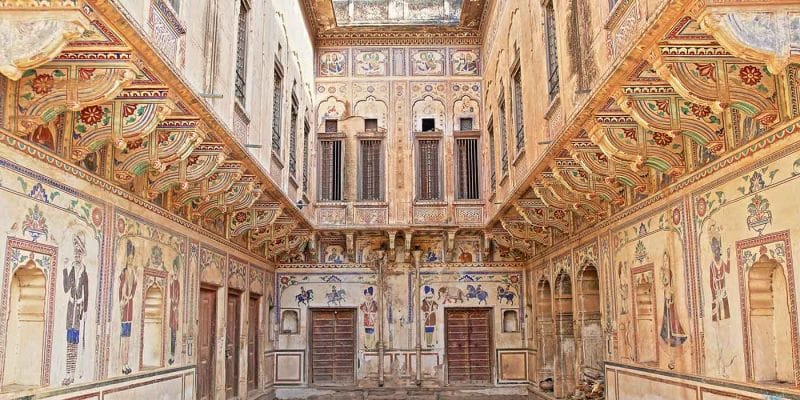
Rajasthan, the “Land of Kings,” mesmerizes travelers with its vibrant tapestry of forts, palaces, and deserts. But beyond the popular tourist tracks lies a hidden gem – the Shekhawati region. Nestled between Jaipur and Bikaner, this arid land unveils a unique artistic legacy, vibrant history, and a charm that leaves you spellbound.
So, buckle up as we embark on a budget-friendly journey through the Shekhawati region, discovering its treasures without breaking the bank:
1. A Fresco Frenzy:
The Shekhawati region is renowned for its breathtaking fresco-adorned havelis (traditional mansions). These walls come alive with colorful murals depicting mythological scenes, everyday life, and even quirky caricatures. Explore towns like Mandawa, Nawalgarh, and Fatehpur for a visual feast, often for free or with minimal entry fees. Tip: Carry binoculars to admire the intricate details from rooftops!
Budget: ₹100-200 per haveli (optional)
2. Caravanserai Whispers:
Step back in time at the historic caravanserai, once resting points for traders traversing the Silk Route. Marvel at the grandeur of the Khandela and Churu caravanserais, now transformed into hotels or heritage sites. Imagine bustling caravans laden with spices and stories, and soak in the echoes of a bygone era.
Budget: ₹200-500 per night (accommodation in converted caravanserais)
3. Off the Beaten Path:
Venture beyond the main towns and discover hidden gems like Dundlod, known for its intricately carved cenotaphs, and Bihani, famous for its stepwells and Jain temple. These pockets of history offer a glimpse into the region’s cultural tapestry and a chance to connect with locals.
Budget: Free to explore
4. Textile Tales:
Shekhawati boasts a rich tradition of handloom textiles, with vibrant colors and intricate patterns. Weave your own story by bargaining for leheriya dupattas, dhurries, and block-printed fabrics in bustling bazaars. Don’t miss the Shekhawati Textile Museum in Jhunjhunu for a deeper dive.
Budget: ₹100-500 for textiles (depending on bargaining skills!)
5. Culinary Delights:
Embark on a culinary adventure with authentic Shekhawati flavors. Savor bajra roti with daal bati churma, indulge in melt-in-your-mouth ghevar, and don’t miss the spicy laal maas for a fiery kick. Budget-friendly homestays and local dhabas offer the best culinary experiences.
Budget: ₹100-200 per meal
Estimated Total Budget: ₹500-1000 per day (excluding travel)
Remember: Public transportation is readily available, but renting a bike or car offers more flexibility. Homestays and budget hotels provide comfortable accommodation.
Beyond the budget: Attend the Shekhawati Festival in October for a vibrant celebration of art, music, and culture. Participate in a pottery workshop or try your hand at block printing for a hands-on experience.
The Shekhawati region beckons with its hidden treasures, waiting to be discovered by budget-conscious explorers. So, pack your curiosity, a sense of adventure, and prepare to be captivated by the unique charm of this off-the-beaten-path gem in Rajasthan.
This list offers a diverse mix of experiences, from bustling cities to serene lakes, wildlife encounters to historical journeys. Choose your top picks based on your interests and create an unforgettable Rajasthan adventure!
I hope this helps! Let me know if you’d like me to elaborate on any of these places or suggest specific activities within Rajasthan.




